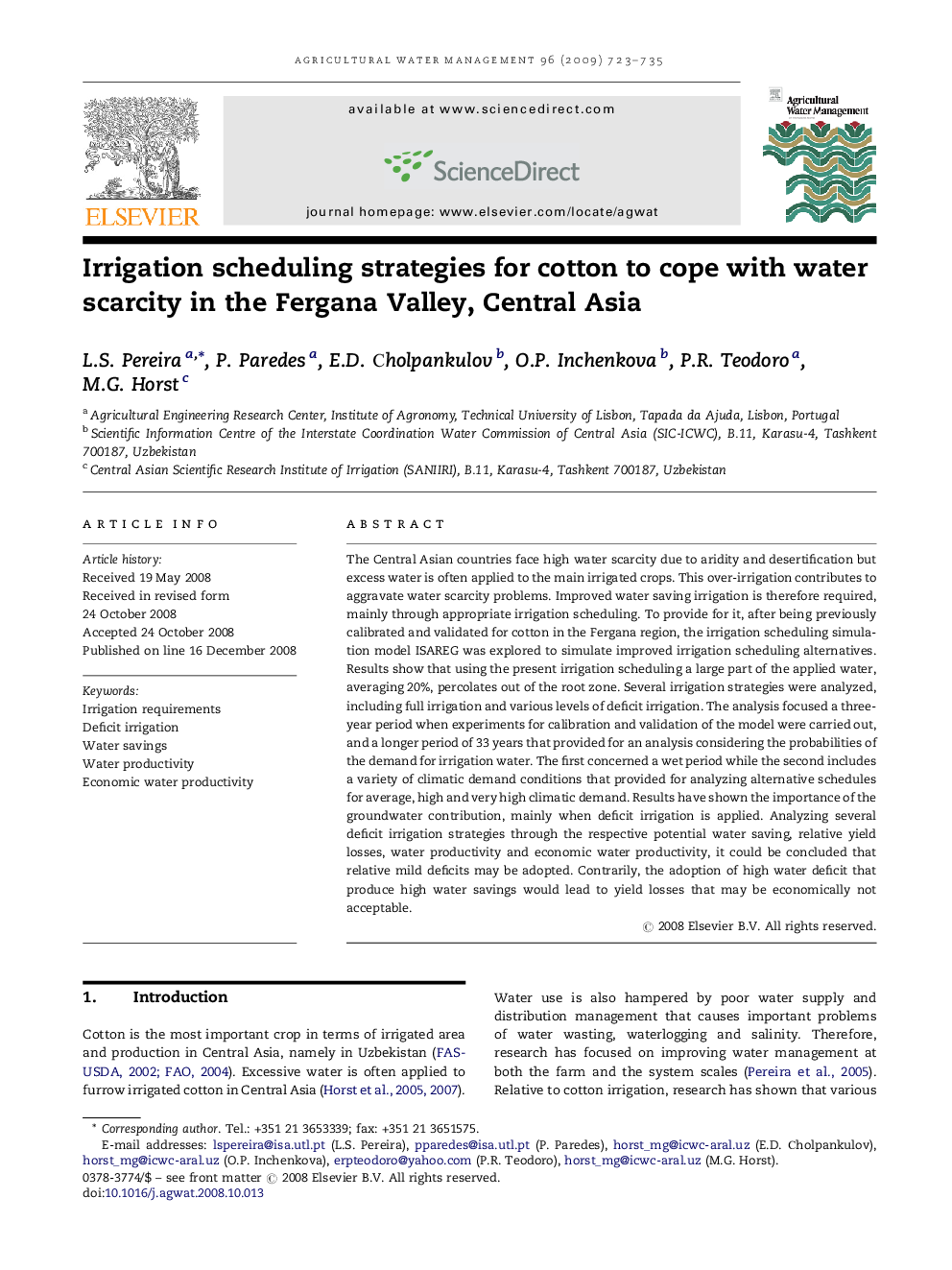| Article ID | Journal | Published Year | Pages | File Type |
|---|---|---|---|---|
| 4479495 | Agricultural Water Management | 2009 | 13 Pages |
The Central Asian countries face high water scarcity due to aridity and desertification but excess water is often applied to the main irrigated crops. This over-irrigation contributes to aggravate water scarcity problems. Improved water saving irrigation is therefore required, mainly through appropriate irrigation scheduling. To provide for it, after being previously calibrated and validated for cotton in the Fergana region, the irrigation scheduling simulation model ISAREG was explored to simulate improved irrigation scheduling alternatives. Results show that using the present irrigation scheduling a large part of the applied water, averaging 20%, percolates out of the root zone. Several irrigation strategies were analyzed, including full irrigation and various levels of deficit irrigation. The analysis focused a three-year period when experiments for calibration and validation of the model were carried out, and a longer period of 33 years that provided for an analysis considering the probabilities of the demand for irrigation water. The first concerned a wet period while the second includes a variety of climatic demand conditions that provided for analyzing alternative schedules for average, high and very high climatic demand. Results have shown the importance of the groundwater contribution, mainly when deficit irrigation is applied. Analyzing several deficit irrigation strategies through the respective potential water saving, relative yield losses, water productivity and economic water productivity, it could be concluded that relative mild deficits may be adopted. Contrarily, the adoption of high water deficit that produce high water savings would lead to yield losses that may be economically not acceptable.
